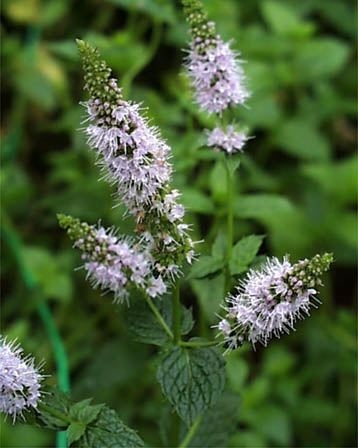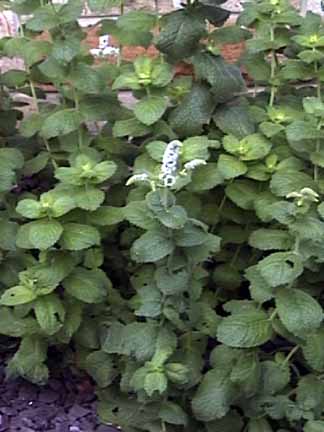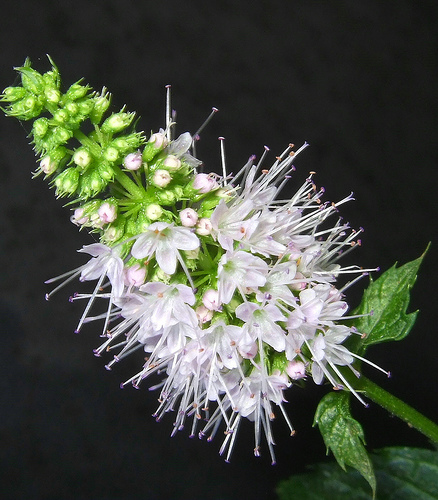- HubPages»
- Food and Cooking»
- Cooking Ingredients»
- Herbs & Spices
Powerful Peppermint
Medical Warning
Always consult a qualified health professional to insure an accurate diagnosis and individually tailored treatment of any serious medical condition or sympton
Growing Essentials
Peppermint prefers full sun but can take partial shade and one great thing is the plant is not bothered by pests.
You should plant in soil rich in organic material and top dress annually with 1-2 inches of compost. Cut the plant back to the ground in winter.
Peppermint would be easy to love if it were not for one flaw. It doesn't know when to quit. Keep the plant in line by confining it with a stone or paved border. Or put the plant into a container and set the whole pot into the ground.
Peppermint doesn't set viable seeds. Propagate by cuttings or by division. Divide it up every few years in spring.
How To Grow Peppermint
Cool Relief For Indigestion , Sore Throat , Nausea
Healing Garden Series
Peppermint
Peppermint is one of those plants we encounter nearly every day , in foods , toothpaste , beverages , candy and even the wax we use to shine our floors. Rge herb's pleasant fragrance and strong refresging taste accent hundreds of products.
Less known are its medicinal properties. Peppermint is an effective home treatment for indigestion , nausea , sore throats , colds , cramps . and gas. The antibacterial and anti viral qualities of its oil make peppermint a useful ingredient in toiletries and grooming aids. In ancient Rome , Peppermint was a sign of hospitality.It was strewed onto floors and served with food so guests would know that a house had been cleaned and readied for their visit.
Habits
A member of the mint family , peppermint is a perennial herb native to Europe. It is a naturally occurring hybird of spearment and watermint. You can easily recognize peppermint by its dark green oval leafs and red-purple square stems topped by small lavender or pink flower spikes. The plant blooms throughout summer and into early fall.
It can reach a height of two feet but it spreads limitlessly by sending out stolons or horizontal runners. Unless it is contained , peppermint very quickly becomes a nuisance to gardners. It prefers moist areas and grows wild next to ditches , along streams and in wet meadows.
Peppermint Plant

Organic Herb Gardening Tips : Medicinal Uses For Fresh Peppermint
How It Works
Peppermint's punch resides in it's oil, which contains menthol , flavonoids , and vitamins A and C. Concentrated in the leafs , peppermint oil stimulates the gallblader to secrete bile , which can promote digestion. It relaxes the muscles of the throat and stomach and has a slight anesthetic effect. The menthol in peppermint also has antibacterial and antifungus properties.

Cautions, Be Sure To Read
Peppermint has no known side effects or interactions with other medications. However because it stimulates the production of bile , those with gallbladder problems or related conditions should not use peppermint. If in doubt talk to your doctor.
Herbal Alternative Medicine : Using Herbs to Get Rid of Ants
Harvesting And Using
If you collect peppermint leafs just before it flowers the essential oils are at its highest level. But its okay to pick the leafs anytime during the growing season. The leafs can be used fresh or you can dry them for use in the winter when you can't get fresh leafs. Dried leafs aren't as fragrant as fresh leafs but the essential oils are more concentrated. To harvest and dry simply snip the plant off with garden shears near the ground and hang up side down in a cool dry place until dry. You can then store your dried peppermint leafs in a jar with a tight fitting lid or in a sealed plastic bag or bags.
A tea made from peppermint leafs is great for indigestion , cramps , motion sickness , or gas. Because peppermint also has analgesic properties , the tea will soothe a sore throat. Rubbing exposed skin with peppermint leafs will keep away mosquitoes and other biting insects.
Have Any Comments You Would Like To Post About Peppermint Post Them Below.







